📸 Photo Gallery

Ho Plaza, with the iconic McGraw Tower as a backdrop, bustles with activity in all seasons.

West Campus is gorgeous in the fall, with Cayuga Lake serving as a backdrop.

There's nothing quite like Beebe Lake in autumn, with its sweeping panoramas of fall foliage.

Adjacent to the Tang Welcome Center is one of the many dramatic waterfalls found across campus.

Numerous trails outline the edges of Beebe Lake, a favorite destination on campus for runners, hikers and others who enjoy the outdoors.
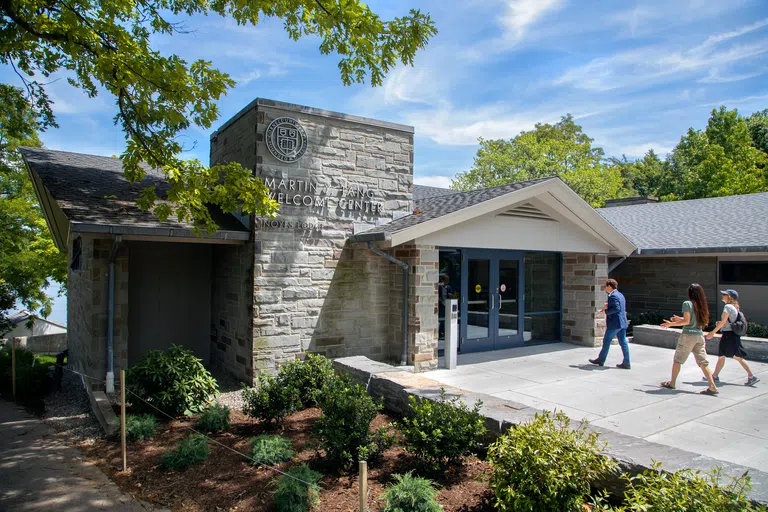
The Martin Y. Tang Welcome Center is often the first stop for visitors to Cornell, especially due to its central location on campus.

Visitors to the Martin Y. Tang Center can enjoy historic and current objects in the Tang Center's "Cornelliana" display.

The A. D. White House is an elegant, beautiful landmark all year round. It is surrounded by stunning gardens that bloom throughout the spring, summer and fall.

The Agriculture Quad — or “Ag Quad” is it is commonly called — is particularly stunning in autumn.

High above Cayuga’s waters, an aerial provides a view of the lake and the Arts Quad in the fall on a clear day.

Homepage Illustration

Conclusion Illustration
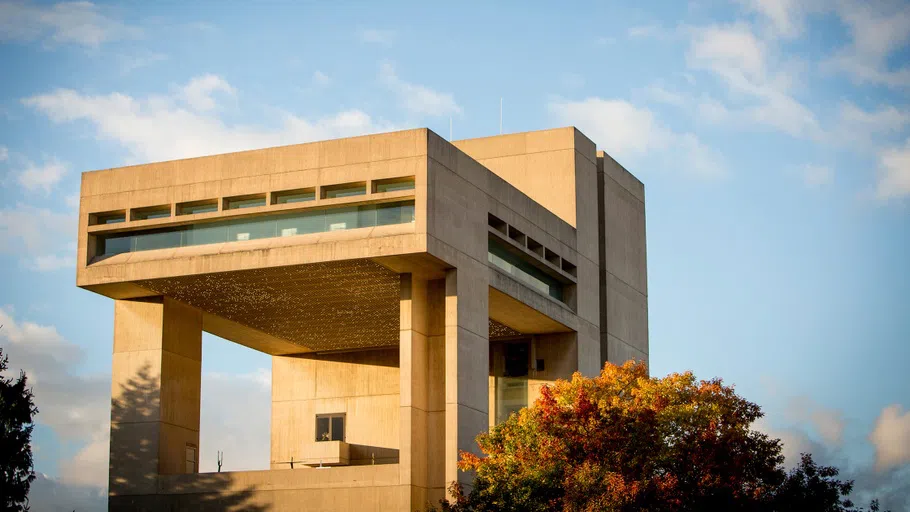
From atop Libe Slope, the Johnson Museum offers stunning views of campus, Ithaca and Cayuga Lake.

Cornell University logo in red

Two students collaborate on a lab experiment in a biochemistry and molecular biology course.

At the annual CALS Fest on the Ag Quad, a student poses with two baby sheep for a photo.

Students talk at a table in Stocking Hall — a building that houses a variety of CALS offerings including state-of-the-art classrooms, a teaching winery, a food processing and development laboratory and the Cornell Dairy Bar.

Students work in the Entrepreneurship at Cornell study area, part of the eHub space in Kennedy Hall that provides conference rooms and other amenities for student startups.

Students walk across one of the Ag Quad’s many pathways on a sunny day.

Students at work in Mann Library. The building includes space for meetings and events, numerous special archival collections and a café with food and drinks.

Students decorate pumpkins on the Arts Quad during a fall celebration. McGraw Tower stands in the background.
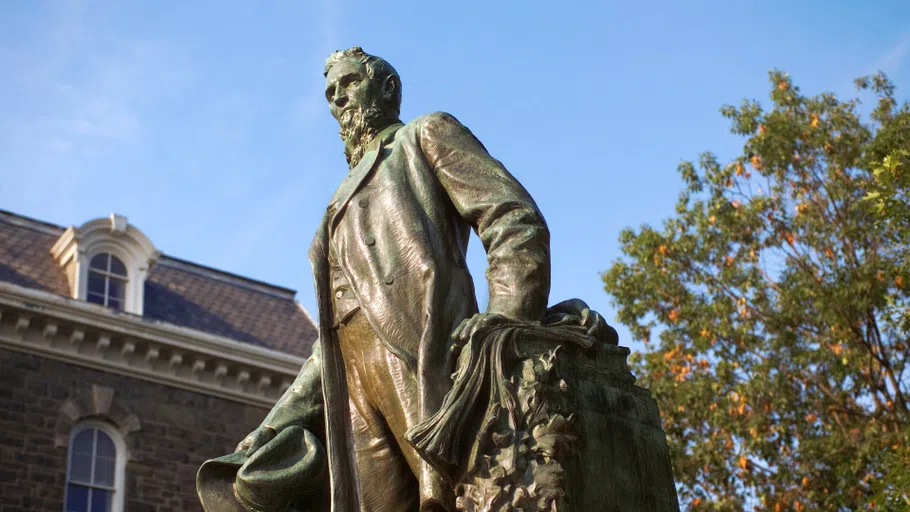
Situated on the west side of the Arts Quad, the Ezra Cornell statue honors the university’s namesake, who championed an institution of higher education open to all.

Student architecture designs on display in the Milstein Dome, which also serves as space for AAP lectures and events.

The Cornell in Rome program — one of AAP’s signature offerings — provides undergraduates an opportunity to study abroad and immerse themselves in Italian architecture, art, design, language and culture.

Minns Garden, located on Tower Road next to the Liberty Hyde Bailey Conservatory, is one of many destinations where CALS students can study horticulture, biodiversity, sustainable design and other topics.

Two students work in a lab with a School of Integrative Plant Science faculty member.
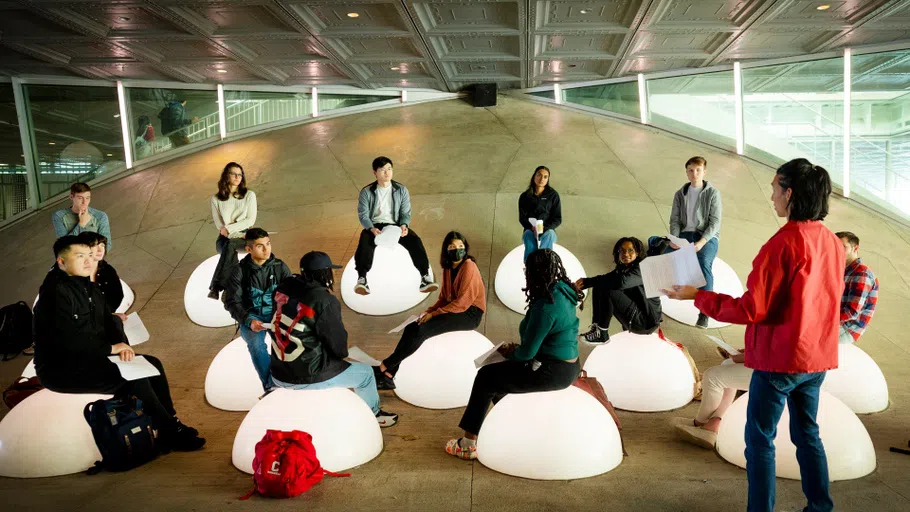
A class gathers on the unique architecture outside Milstein Hall, home to the College of Architecture, Art, and Planning (AAP).

Each spring, first-year AAP architecture students build a colorful dragon to parade through campus for Dragon Day, one of the university’s oldest traditions.

At the Gensler Family AAP NYC Center, students take classes and gain practical experience in the heart of the architecture industry.

Light-filled and spacious painting and drawing studios in AAP’s Tjaden Hall offer flexible environments for a wide variety of work and media.

An overhead view of Klarman Hall's atrium, where students can collaborate in small groups, study quietly or enjoy a bite from the Temple of Zeus café.

A student performs an experiment in one of the Physical Science Building's labs for applied and engineering physics — one of many such labs used by Arts and Sciences students and researchers.

A research associate and student work together on a biochemistry project in Baker Lab.

With four performance spaces plus dance and theater rehearsal studios — not to mention numerous shops for costumes, props and scenery — the Schwartz Center for the Performing Arts offers unlimited opportunity for creative expression.

A Korean drumming troupe practices in Lincoln Hall, home to the College of Arts and Sciences’ music department.

Kroch Library hosts exhibits on a regular basis — such as this one that spotlighted the Cornell Hip Hop Archives’ extensive collection of photographs of black female icons.

The 21 bells in McGraw Tower are played by chimesmasters who perform daily while classes are in session. (Please note: due to renovations, the tower is closed to visitors through late 2024.)

A dramatic sunset bathes Uris Library (left) and McGraw Tower (right) in streaks of purple and blue light.

Exterior of Bailey Hall in autumn.

Students leaving Bailey Hall after a class on a gorgeous fall day.

The Cornell community regularly enjoys performances by top international musicians and acts, such as this staging of a comedic opera about 18th-century Paris.
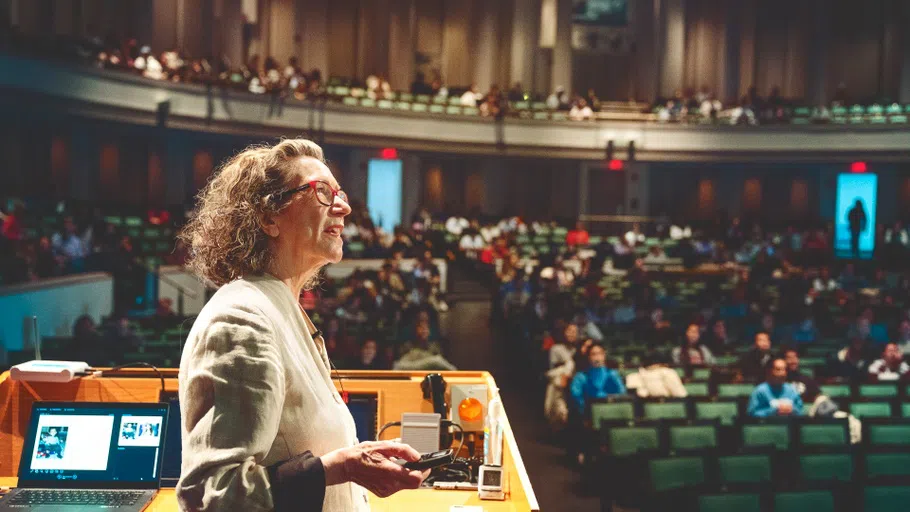
Bailey Hall is often the setting for the university’s most popular courses, such as this Human Bonding class.
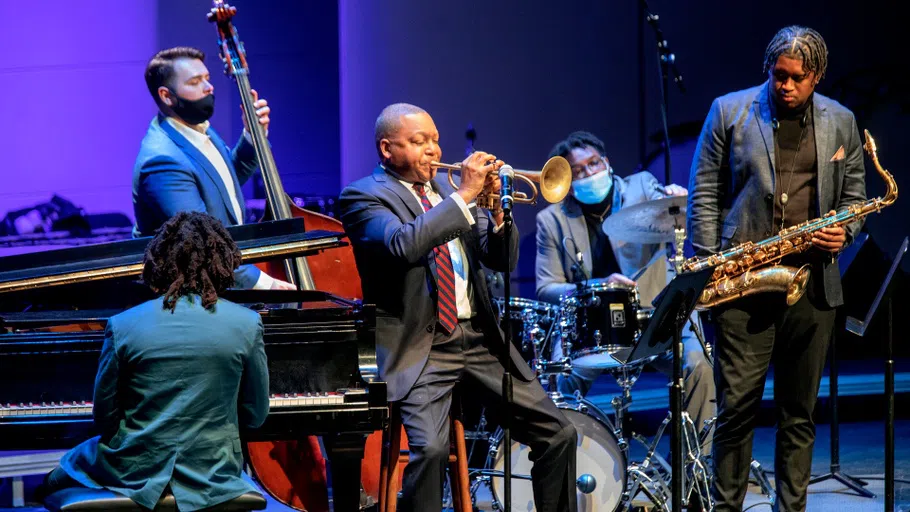
During his time as an A. D. White Professor-at-Large, famed trumpeter Wynton Marsalis performed with his jazz combo.
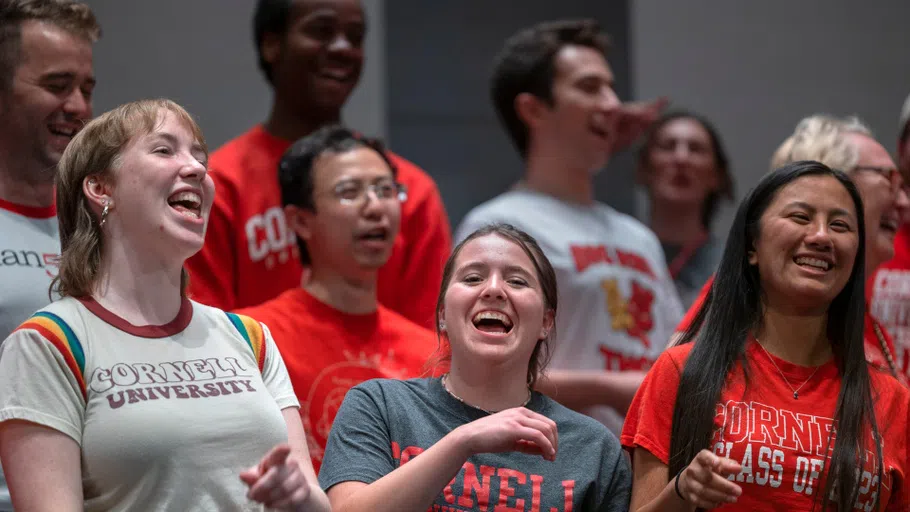
A group of students and young alumni perform as part of Reunion weekend.

Current and former members of the Cornell University Chorus and Glee Club perform to a packed audience during Reunion weekend.

A guest conductor wearing a kente cloth stole conducts an intergenerational chorus during a tribute to civil rights pioneer Dorothy Cotton.

Barton Hall, seen here splashed in autumn colors, is host to the university’s track and field facilities, Division of Public Safety and the Department of Military Science.

A custom-built, eight-lane indoor track helps make Barton Hall one of the premier indoor facilities in the eastern U.S. and is often used by top athletes to achieve NCAA- and USATF-qualifying performances.
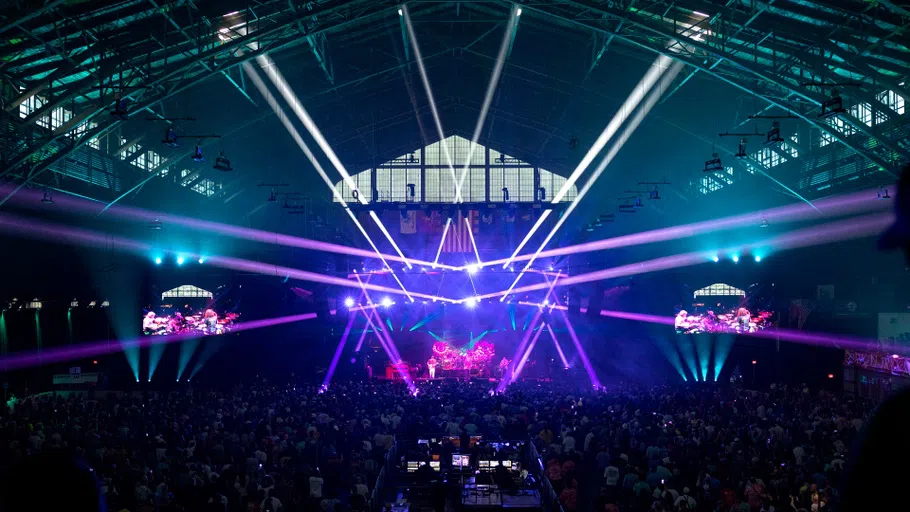
Cornell students, alumni and fans celebrate the return of members of the Grateful Dead, as Dead & Company, to Barton Hall exactly 46 years after one of their most iconic concerts.

Cornell women’s basketball takes on Colgate in Newman Arena at Bartels Hall.

The Cornell women's hockey team takes on rival Princeton in the iconic Lynah Rink.

The Cornell University Pep Band performs at the start of a men's ice hockey game in Lynah Rink.

This 25-yard, 6-lane pool in Helen Newman Hall on North Campus is one of three pools on campus available for community use.

A student scales the Lindseth climbing wall, which offers 8,000 square feet of bouldering, top rope and sport lead rock climbing in Bartels Hall.

Play gets underway at Schoellkopf Field as the Big Red football team kicks off.

President Pollack addresses graduates and their families gathered at Schoellkopf Field for Cornell’s annual Commencement ceremonies.

A fireworks and laser light show illuminate the sky above Schoellkopf Field during the homecoming celebration.

Cornell Police K-9 Luna and her handler pose outside Cornell Police headquarters at Barton Hall.
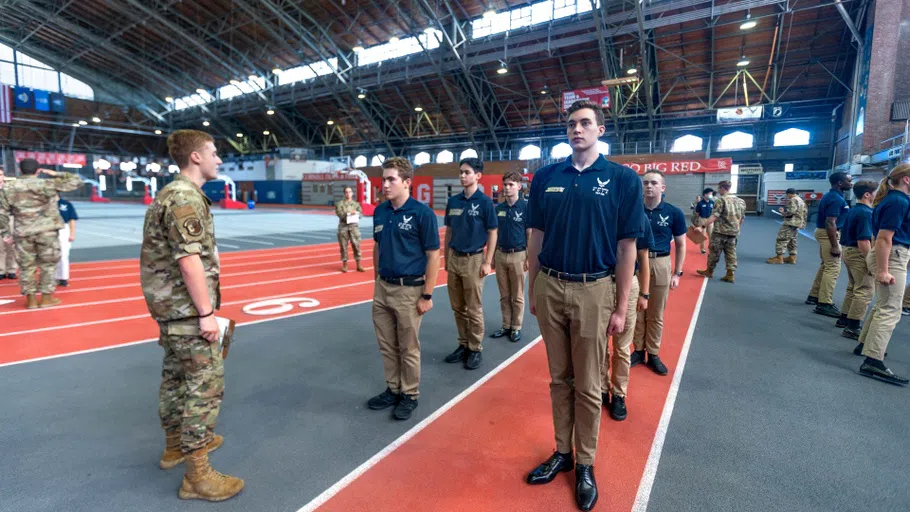
Air Force ROTC members practice drills in Barton Hall.

Exterior of the Cornell Store as seen from Ho Plaza.

Café Jennie at the Cornell Store buzzes with activity as students refuel, connect with one another and hit the books.

The Cornell Store offers all of the Big Red merchandise and supplies every Cornellian needs.
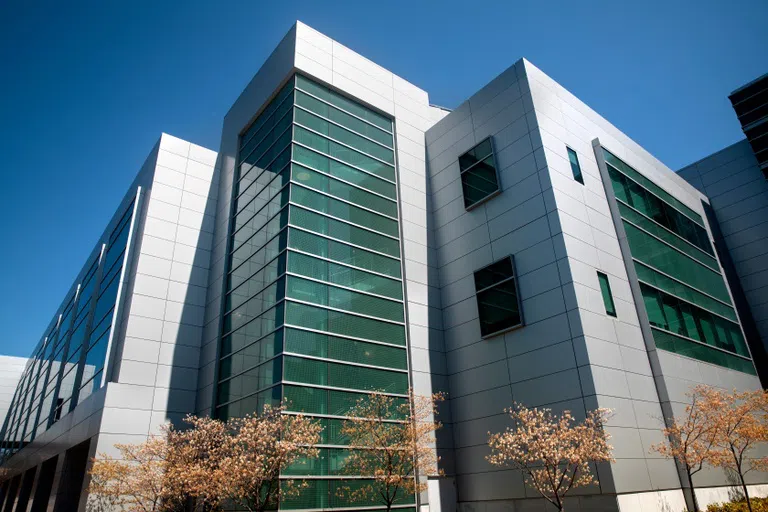
The exterior of Duffield Hall, one of the central homes of Cornell Engineering. The building, which is connected to Upson Hall, includes a large atrium where faculty and students can interact in a relaxed, attractive environment and enjoy light refreshments from an indoor café.

Cornell Engineering students relax in Duffield Hall atrium just near Mattin’s Café, where the campus community can enjoy a broad selection of snacks, coffee and other grab-’n-go items.

Two students walk past Duffield Hall, which houses one of the country's most sophisticated research and teaching facilities for nanoscale science and engineering.

Members of the Cornell Racing Student Project Team — one of more than 30 such project teams at Cornell Engineering — lay out wire harnesses for their all-electric Formula SAE car.

The Cornell Rapid Prototyping Lab — run by undergraduate students in partnership with the Cornell Nanoscale Science and Technology Facility — offers a wide variety of 3-D printers and laser cutters to the campus community.

Students study in Duffield Hall during the first week of the spring semester.

Students work on a project for CUAir, an interdisciplinary student team that designs, builds and tests search-and-rescue unmanned aerial systems.

An engineering student works on a project in Upson Hall’s Experiential Learning Lab during “Jan Fab,” a two-week period on campus during winter break when students from Student Project Teams drill, mill, bore, smooth and otherwise prepare for upcoming regional and national contests.

The Digital Ag Hackathon, open to all Cornell students, challenges them to collaborate on technology-based solutions that could revolutionize agriculture and food systems.

With 14 majors, Cornell Engineering offers an interdisciplinary environment that prepares students for graduate school and for careers in industry, government, non-traditional engineering and other sectors.

Two ILR students listen attentively during a class.

Biomedical engineering students often use the design lab for prototyping and testing electronics, polymers, metals, chemicals, software and other materials. Its 1,300 square feet of workspace also features 3-D printers, oscilloscopes, soldering stations and other tools.

Bill and Melinda Gates Hall houses majors offered in Cornell Engineering, Arts and Sciences and Cornell CALS, demonstrating the power of cross-campus collaboration.

Students and faculty working, studying and talking as seen from the opposite side of the Gates Hall atrium.

A student in the EmPRISE Lab watches as an assistive robot prototype picks up a piece of fruit with a fork.

A group of students celebrates their win in a SoNIC workshop competition, during which they designed a prototype device for the visually impaired.

A computer science professor leads a workshop on “Designing Technology for Social Impact.”

A student demonstrates data-collection techniques as part of a project aimed at improving the functionality of autonomous vehicles.

Computer science students in Bowers CIS collaborate on “Bubblegum Bandit,” their entry in a game design competition.

A Cornell Bowers CIS student works on formulas in an office in Gates Hall.

Barnes Hall is home not only to Cornell Career Services, but also to two Steinway grand pianos that are part of the Department of Music’s collection of 18th- and 19th century pianos.

A student from the SC Johnson School of Business engages in a one-on-one coaching session with an executive in Barnes Hall as part of the Marketing Executive Coaching Program.

In addition to career fairs held by individual schools and college at Cornell — such as this event hosted by Cornell’s Nolan School of Hotel Administration — the Career Services office in Barnes Hall also sponsors similar events throughout the year.

Orientation leaders talk with new students on Ho Plaza during Move-In Days.
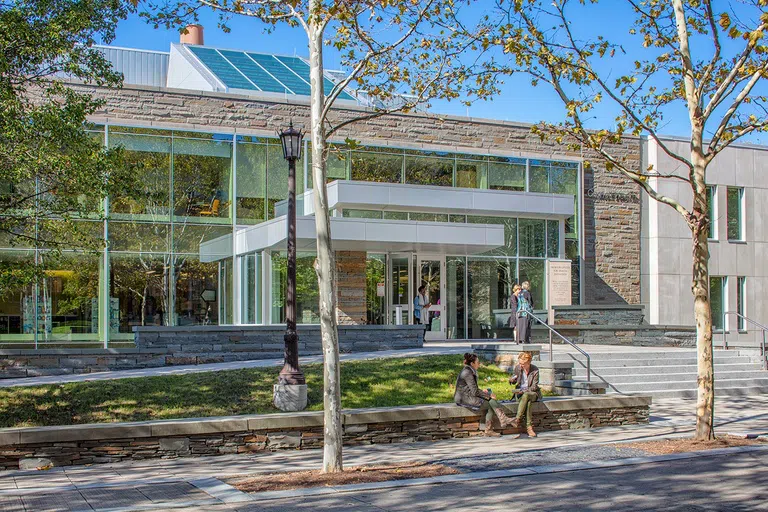
The mission of Cornell Health – located on Ho Plaza next to Willard Straight Hall – is to support campus health and foster student readiness to learn and participate fully in the Cornell experience.
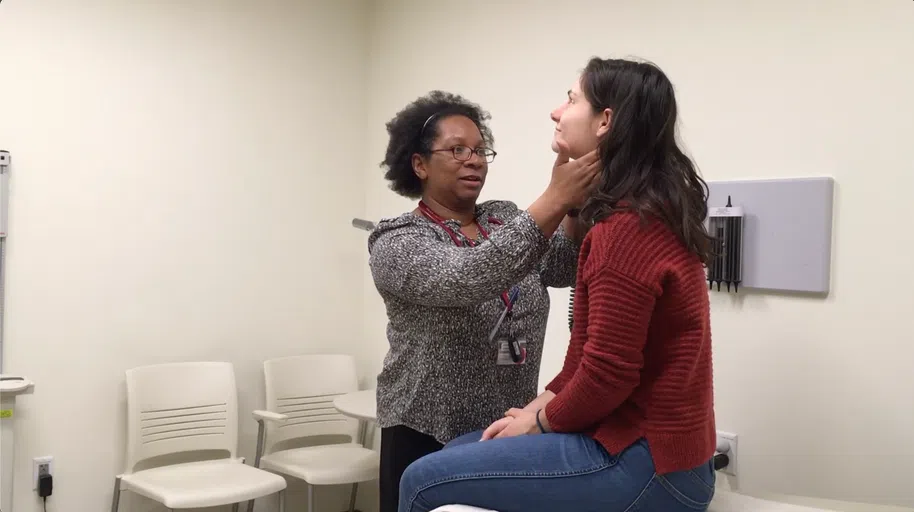
A medical provider at Cornell Health evaluates a patient.
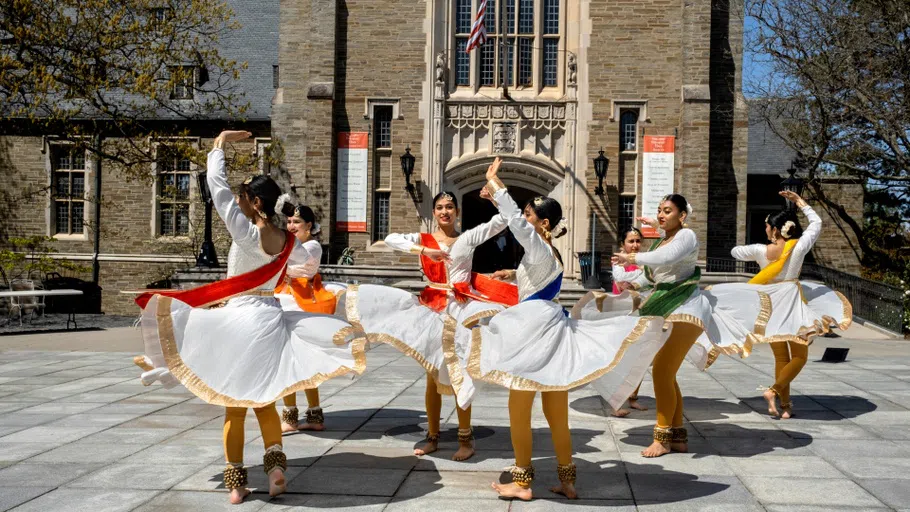
Members of Cornell Nazaqat, an Indian classical dance team, perform a dance called kathak on Ho Plaza outside Willard Straight Hall.

Members of Book Wagon, a student-run program to promote reading literature for leisure, gather in Willard Straight Hall.

King-Shaw Hall, part of Cornell’s School of Industrial and Labor Relations (ILR), is a state-of-the-art conference center with a 36-seat amphitheater, four floors of meeting space and an outdoor space for special events.

A professor of labor relations, law and history teaches a class at the ILR School.

A central hub for the ILR School, Ives Hall includes the Catherwood Library, Kheel Center archival collections, lecture halls and workspaces.
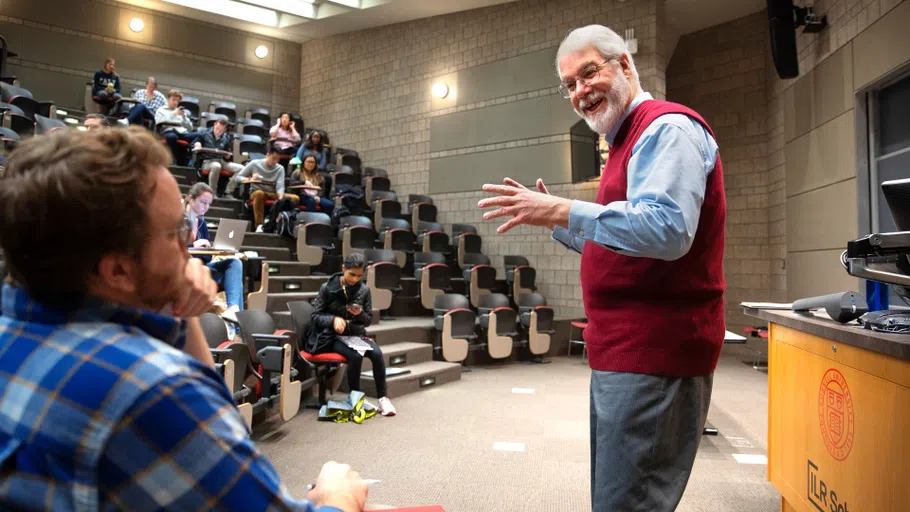
A professor of economics and international and comparative labor interacts with a student during class in Ives Hall.

Thanks to ILR's partnership with the Swami Vivekananda Youth Movement, a group of ILR students travel to southern India each summer to work on initiatives that benefit indigenous and rural communities.

Through the innovative Student Campus Mediation Program — managed by the Scheinman Institute on Conflict Resolution at the ILR School — students gain firsthand experience arbitrating cases involving Cornell students who have committed minor campus policy violations.

From arbitration scrimmages to the Conflict Resolution Club, the Scheinman Institute develops the next generation of arbitrators through a powerful combination of education, real-world skills, innovative learning experiences and professional networking.

One of the 15 centers housed in ILR is the K. Lisa Yang and Hock E. Tan Institute on Employment and Disability, which conducts research and provides continuing education and technical assistance regarding disability in the workplace.

Each year on the Ithaca campus, ILR’s Worker Institute hosts Union Days, a two-day event where ILR students can hear today's groundbreaking labor leaders speak about their work — and make new professional connections in the process.

On the museum’s fifth floor, visitors will find galleries of Asian art along with panoramic views of Cayuga Lake.

Following a trip to a nonprofit think tank in Buffalo, ILR students presented their findings at the Community-Based Advocacy Symposium, an on-campus event during which over 60 students connected on finding new ways to improve their communities.

An ILR senior celebrates her school pride during a recent Commencement ceremony.

Cornell’s Midtown Manhattan hub at 570 Lexington Avenue offers 40,000 square feet of space for activities including conferences, seminars, workshops, classes and receptions.

Students walk up Libe Slope toward McGraw Tower and the Arts Quad on a fall day.

Students gather on the slope for the annual end-of-semester Slope Day concert and festivities.
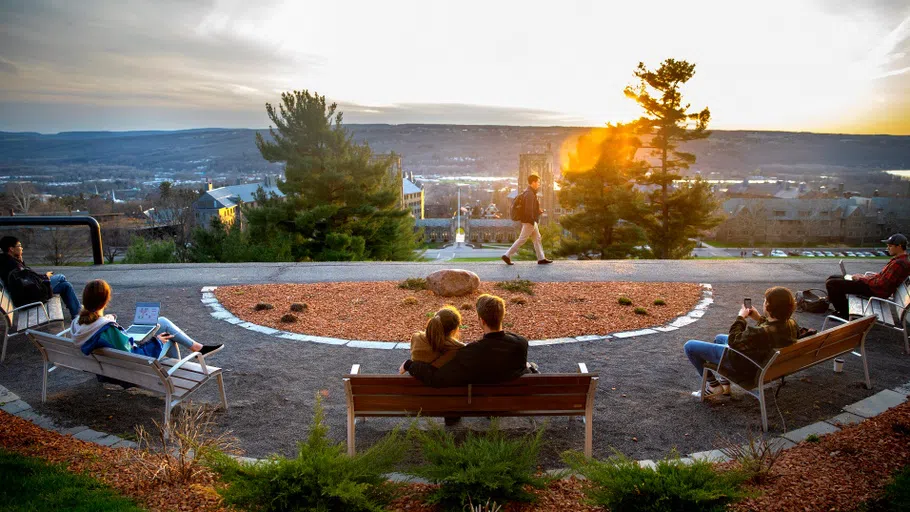
Students, sitting on a bench near Libe Slope, watch the sunset over Cayuga Lake.

Students walk up a Libe Slope pathway on a crisp winter day.

Libe Slope is also a frequent gathering spot for studying, both in groups and on one’s own.

This gallery of modern and contemporary art is one of many in the museum, where admission for everyone is always free.
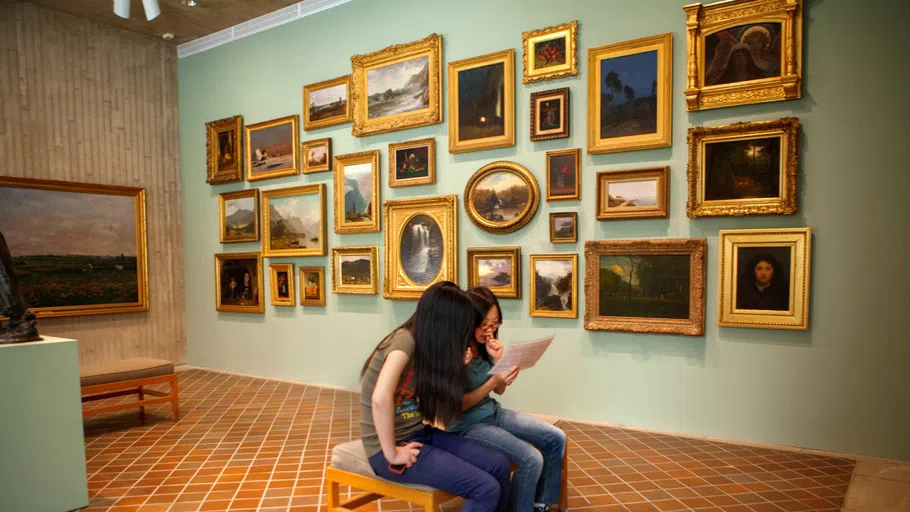
Two visitors in a Johnson Museum salon-style gallery read more about the 19th-century artworks on view.

All Cornell Dining staff receive regular training on allergen labeling, special dietary needs, avoiding cross-contamination and other important topics to help keep the community healthy and safe.

Meinig Family Cornell National Scholars work in the Morrison Dining kitchen during a cook-off event attended by the university’s top leadership.

The Martha Van Rensselaer Hall, a beautiful Georgian Revival-style building that houses many units of the College of Human Ecology and the Cornell Brooks School of Public Policy.

Located in Martha Van Rensselaer Hall, the Cornell MRI Facility — a collaboration between Cornell Human Ecology and Weill Cornell Medicine — supports cross-disciplinary research in fields spanning from neuroscience to linguistics to biomedical engineering.

Fashion design students and faculty display original works and curate exhibits in the Jill Stuart Gallery.

Apparel sketches adorn the walls of the fashion design studios in the Human Ecology Building. Each year, the student-run Cornell Fashion Collective presents a show featuring looks created and modeled by Cornell students.

Students and faculty access laser cutters, 3-D printers and other cutting-edge equipment in the Digital Design and Fabrication Studio.

Reflecting Human Ecology’s principles of human-centered, inclusive design is the PolyForm, an eye-catching display whose colors and reflections change depending on the time, weather and the viewer’s orientation. The work was created by Jenny E. Sabin, chair of the Department of Design Tech at Cornell’s College of Architecture, Art, and Planning.

Core areas of focus for the Cornell Jeb E. Brooks School of Public Policy include data science and technology policy; environmental and sustainability policy; global security; health policy; the politics and economics of development; race, racism and public policy; and social policy and inequality.

A crucial part of the Brooks School undergraduate experience is directly engaging with faculty members to learn about their areas of expertise and research.

Two graduate students in the Sloan Master of Health Administration program collaborate on an orientation activity.

Located in the historic Dupont Circle district, Cornell in Washington welcomes undergraduates from virtually every major to live, learn and intern in the nation’s capital.

Undergraduate and master’s-level students alike gain real-world policy experience with internships and professional opportunities in Washington, D.C.

Visitors to the Martin Y. Tang Welcome Center can enjoy historic and current objects in the center's "Cornelliana" display.

In the spirit of Ezra Cornell’s founding goal of “. . . any person . . . any study,” students lock arms for the traditional singing of the alma mater at Cornell Homecoming.
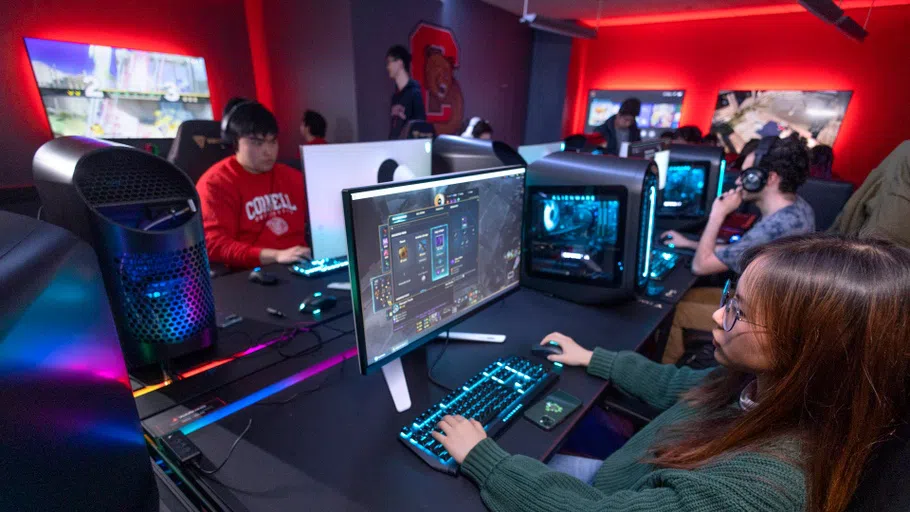
The Esports Gaming Lounge, in the Robert Purcell Community Center on North Campus, has 16 high-spec gaming PCs and TVs. Best of all, it’s free to use for all Cornell students, of all gaming experience levels!

Adjacent to the Martin Y. Tang Welcome Center is Triphammer Falls, one of the many dramatic waterfalls found across campus.
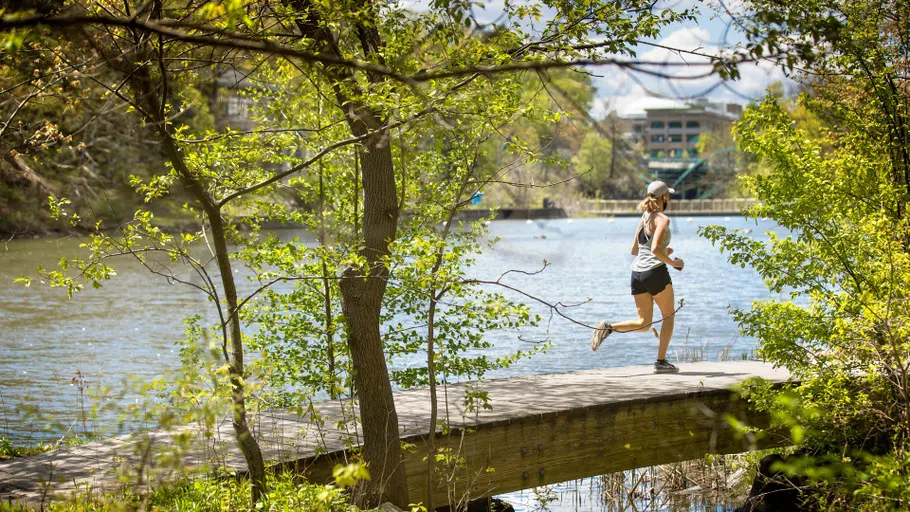
Numerous trails outline the edges of Beebe Lake, a favorite destination on campus for runners, hikers and others who enjoy the outdoors.

Morrison Dining is one of three new “all-you-care-to-eat” dining facilities available to residents living on North Campus.
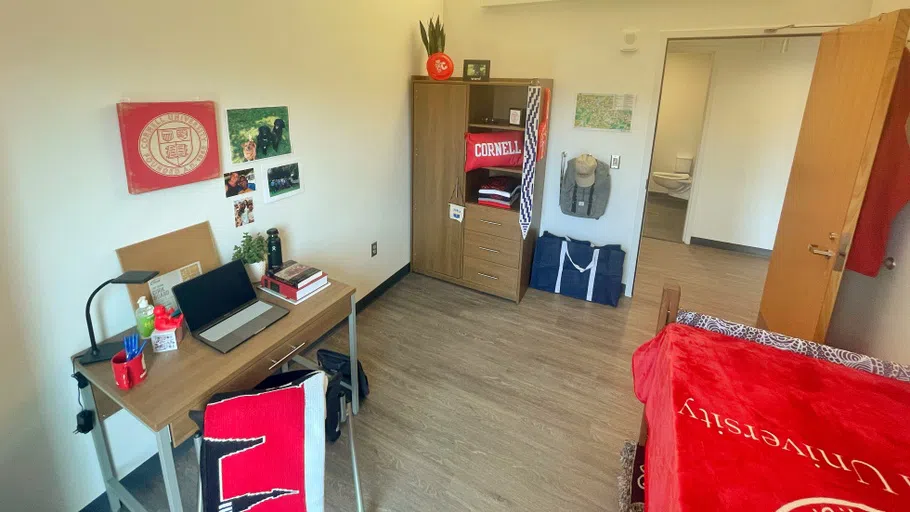
A typical residence hall room in Toni Morrison Hall.

Students hang out in a courtyard adjacent to Toni Morrison Hall.
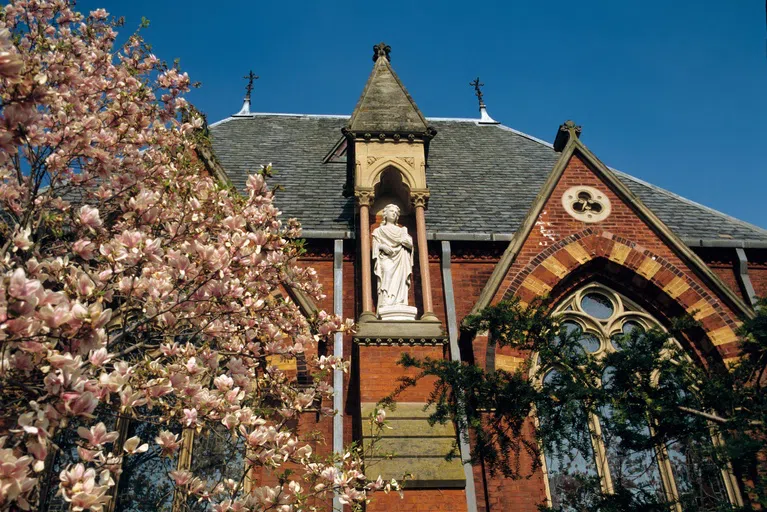
For nearly a century and a half, Sage Chapel has hosted services, events, speakers and numerous other events for the Cornell community.

Sage Chapel, as seen from overhead on a beautiful spring day.
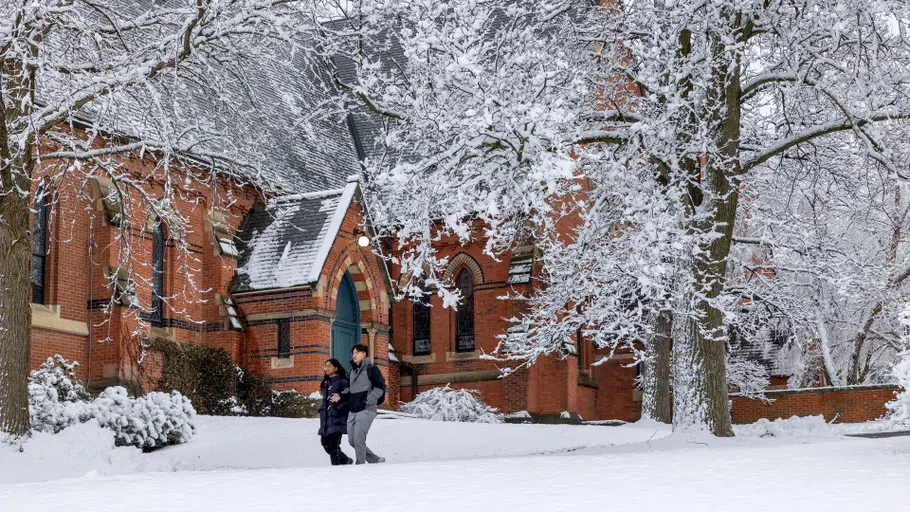
Students pass by the chapel, which is an inspiring, gorgeous sight in any season.

The Cornell Chorus performs at the Choral Showcase in Sage Chapel.
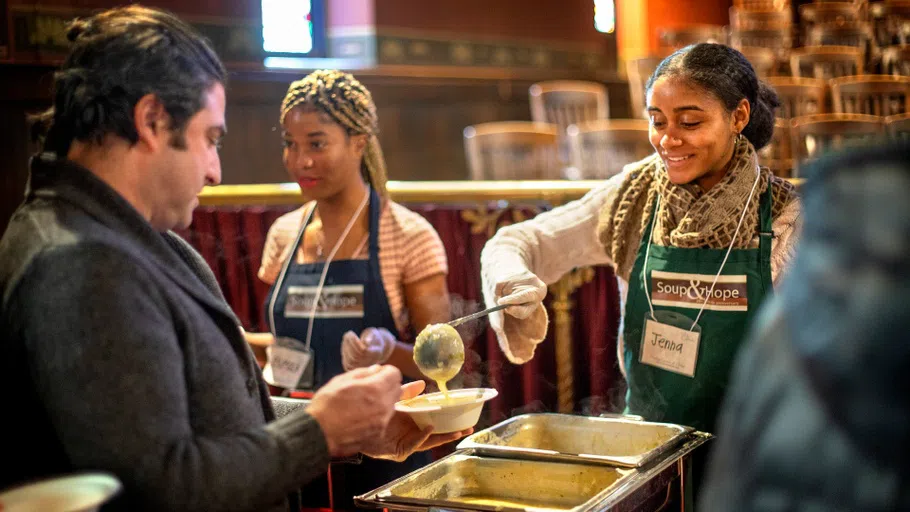
Each winter, the Office of Spirituality and Meaning-Making hosts a lunchtime series called “Soup and Hope,” where the Cornell community gathers to hear inspiring stories from guest speakers.

The Aeolian-Skinner organ was built for Sage Chapel in 1940, and regularly accompanies Cornell’s choral ensembles in concert in addition to numerous solo recitals each year.

Based on the English parish church, Sage Chapel features asymmetrical massing and entrances and a high, hammer-beam roof.

In addition to religious and spiritual activities, the chapel also regularly hosts guest speakers, such as when the Department of Sociology hosted a talk with criminal justice activist Yusef Salaam.

Sage Hall, home to the Cornell SC Johnson College of Business.

A faculty member teaches a finance class in Sage Hall.

A student presents as part of a panel discussion at the Dyson School.

Establishment at Statler — considered a classroom first, and restaurant second — is a hands-on learning environment where students can synthesize food-service concepts, business principles and hospitality management theories.

As part of the Nolan Hotel School’s 100th anniversary celebration, Hotelies revived the tradition of the Parisian waiter’s race: a “server derby” in which they try to avoid spilling trays of soup while running across Ho Plaza.
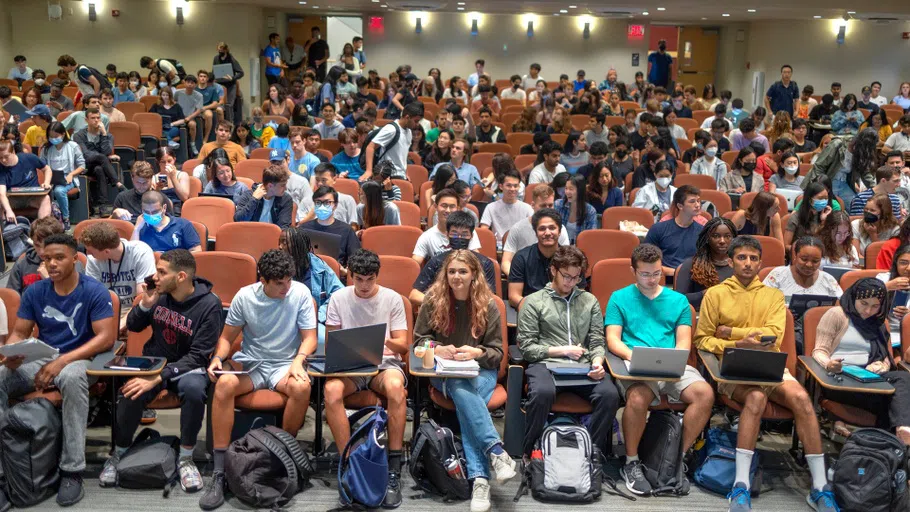
Nolan Hotel School students gather in a Statler Hall lecture room on the first day of class.

In the Breazzano Family Center for Business Education — located in the heart of Ithaca’s Collegetown neighborhood — students have access to high-tech videoconferencing facilities and 19 breakout rooms, plus classrooms and office space.

Students collaborate in the Breazzano Family Center for Business Education.

As both an important historic structure and a center for collaboration, the A. D. White House often hosts discussions and seminars throughout the year.
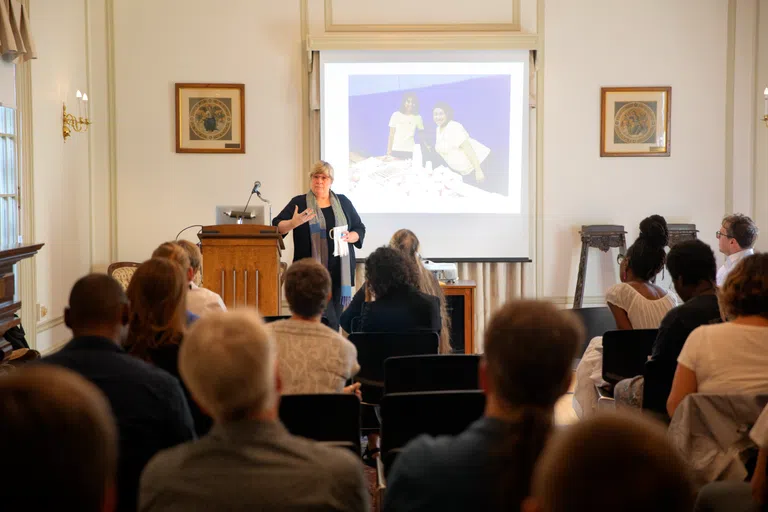
The A. D. White House serves as the primary home for the Society of Humanities, an interdisciplinary organization that connects visiting fellows, students and faculty each year.

A social meeting spot for graduate and professional students, the Big Red Barn offers a cozy breakfast and lunch cafe, outdoor picnic tables and even an indoor fireplace.

Caldwell Hall, on the north end of the Agriculture Quad, serves as the main home for the Cornell University Graduate School as well as the Office of Global Learning.

Based in Caldwell Hall, the Office of Global Learning supports international students visiting Cornell and study abroad opportunities, such as this trip for horticulture students to learn about native plants of Belize.

Cornell graduate students pursue research and scholarship in nearly 100 fields, the broadest range of programs in the Ivy League.

A Cornell AgriTech professor and a graduate student operate a drone in a research vineyard.

Attendees listen to a speaker at the Pathway to Success Symposium, the Graduate School’s biannual professional development event.

Grad students enjoy an informal social at the Big Red Barn's indoor cafe.
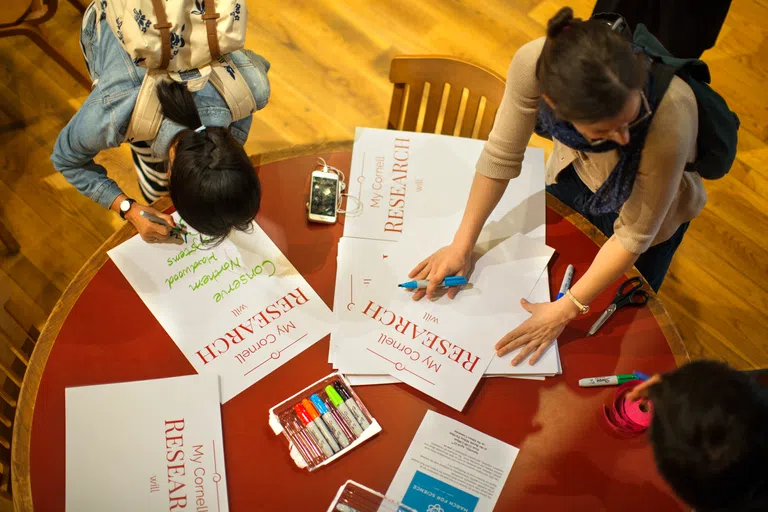
Graduate students collaborate on materials for a research advocacy trip at a table in the Big Red Barn.

The Big Red Barn is a relaxed, informal environment where students often get together for socials, both indoors and outside.

The Cornell Health Pharmacy fills prescriptions and offers a wide variety of self-care supplies, medications, healthy snacks and other products that support health and wellness.

Students study together in Mann Library, one of 18 libraries available to the Cornell community.

An archivist from the university’s Rare and Manuscript Collections examines a rare book as part of a digitization project.

Students study in the A. D. White Reading Room in Uris Library.

The Amit Bhatia Libe Café in Olin Library offers a cozy nook for studying and socializing, especially on a winter day.

Morrison Dining is a sleek, modern space where students can choose from 11 food concepts in four main areas.

Cornell Dining staff prepare food in a serving area at Toni Morrison Hall.

Students on North Campus can take advantage of the fitness center at Toni Morrison Hall.

Parents and families share a meal with their students during Move-In prior to the start of fall classes.

Five new residence halls for first-year and sophomore students lie at the heart of North Campus, seen here with Beebe Lake to the left and Cayuga Lake in the background.

The west side of Willard Straight Hall, as seen on a beautiful autumn day.
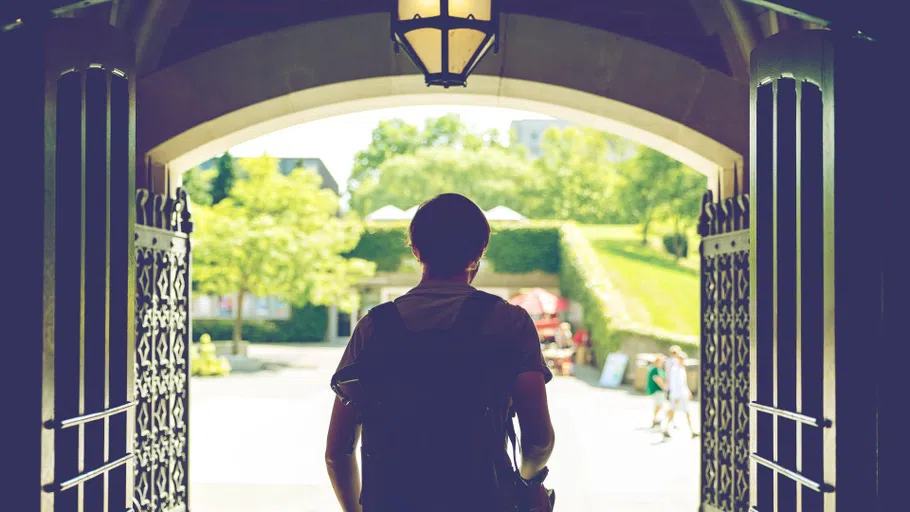
A student exits Willard Straight Hall onto Ho Plaza.
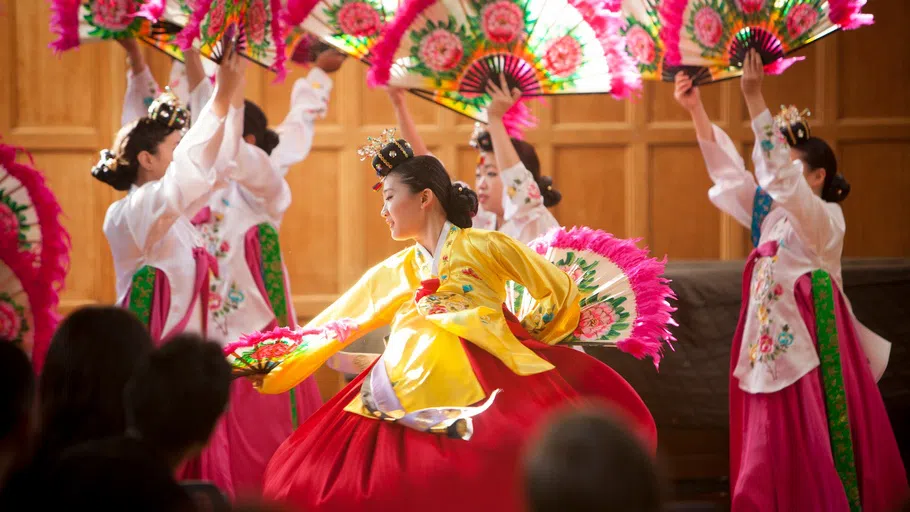
Dancers wearing traditional Chinese dress perform in the Willard Straight Memorial Room.

A student gymnast practices a handstand in the Willard Straight Memorial Room.

The Nevin Welcome Center at Cornell Botanic Gardens

The Robison Herb Garden at Cornell Botanic Gardens features 500 varieties of herbs throughout 17 theme beds.

Visitors walk the path around Houston Pond at F. R. Newman Arboretum, a part of Cornell Botanic Gardens.

Visitors to the Herbert F. Johnson Museum of Art take in the Immortal at the River, a 54-meter-long cursive-script calligraphy work by Tong Yang-Tze.
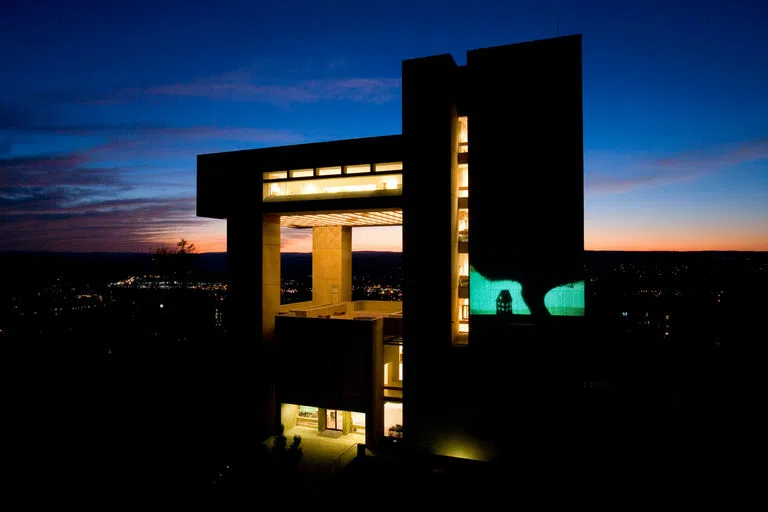
The Johnson Museum of Art lit up at dusk.

Beautiful view of Cayuga Lake from the Herbert F. Johnson Museum at Cornell.

An exhibit at the Herbert F. Johnson Museum of Art, featuring a scultpture by Swiss sculptor and painter Alberto Giacometti.

The Comstock Knoll rhododendron collection in peek bloom at Cornell Botanic Gardens.

The Nevin Welcome Center at Cornell Botanic Gardens in winter.
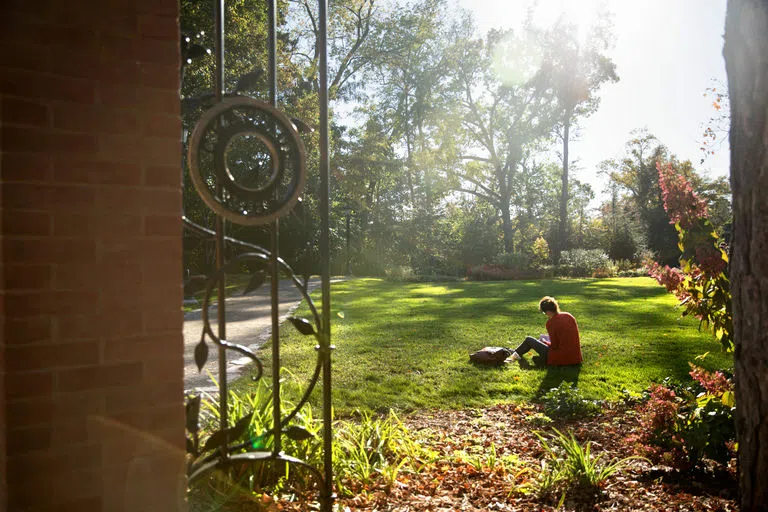
A student finds a quiet place to study in the A.D. White Garden.

The A.D. White Garden

Students walk along a path through the garden behind the A.D. White House.
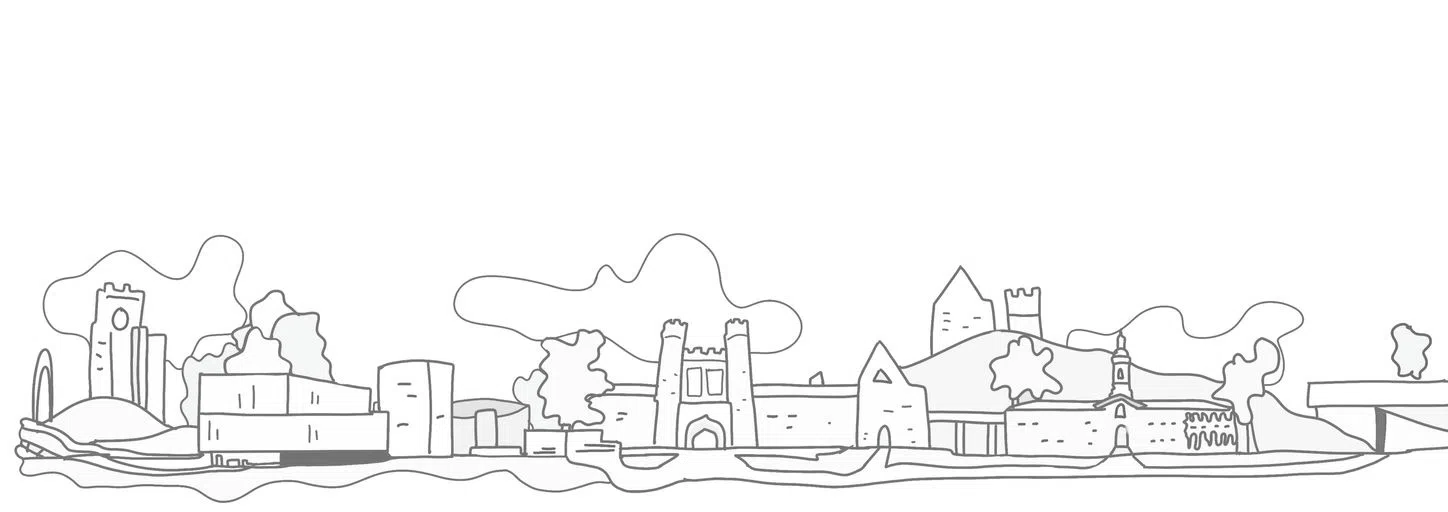
empty

Cornell General Campus Tour